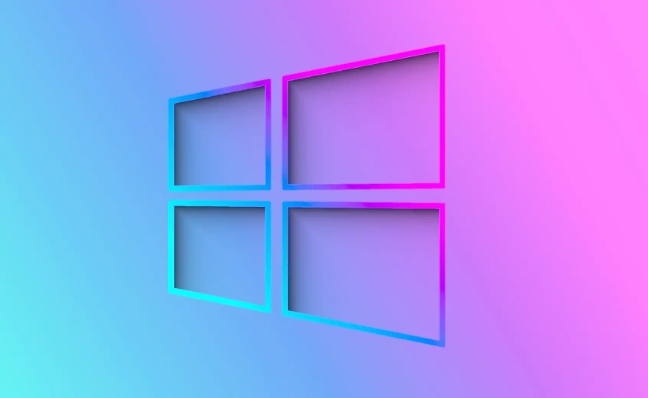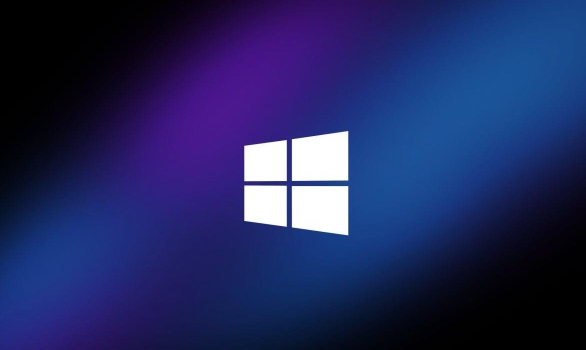Connect an external drive or access a network folder, open Settings > Update & Security > Backup, click Add a drive, and select the drive to enable File History, which automatically backs up libraries, desktop, contacts, and favorites. 2. In Backup settings, click More options to customize backup frequency (e.g., every 10 minutes, hourly), set retention duration (from months to forever), and manually add folders outside default locations for backup. 3. To restore, go to the original folder in File Explorer, click Home > History, use the timeline to find a version, select the file or folder, and click Restore—overwriting the current file—or choose a different location via the dropdown. 4. For advanced control, go to Control Panel > System and Security > File History, click Advanced settings to adjust backup frequency, retention, exclude file types, run manual backups, or change/turn off the backup drive. File History is ideal for protecting personal files but does not replace full system backups; ensure the drive is regularly connected or use a network location for automatic protection, making it a reliable “set it and forget it” solution for ongoing file safety.

File History is a built-in backup feature in Windows that automatically saves copies of your files to an external drive or network location. It’s especially useful for protecting personal files like documents, pictures, videos, and desktop files. Here’s how to set it up and use it effectively.

1. Set Up File History
Before File History can back up your files, you need to connect a storage device and turn the feature on.
- Connect an external drive (like a USB flash drive or external hard drive) or make sure you have access to a network folder.
- Open Settings > Update & Security > Backup.
- Under "Back up using File History," click Add a drive.
- Select your connected drive from the list.
Once a drive is selected, File History will automatically start backing up your libraries, desktop, contacts, and favorites.

? Tip: It’s best to use a dedicated drive for File History—Windows will organize the folder structure automatically.
2. Customize Backup Settings
You can adjust how often files are saved and how long they’re kept.

- In the same Backup settings page, click More options.
- Choose how often to save copies of files (e.g., every 10 minutes, hourly, daily).
- Set how long to keep saved versions—you can choose from “forever” to a specific number of months.
- Click Add a folder if you want to back up extra folders outside the default locations.
? By default, File History only backs up folders in your user profile (like Documents, Pictures). If you store files elsewhere, add those folders manually.
3. Restore Files from File History
If you accidentally delete or modify a file, you can restore it from a previous version.
- Open the folder where the original file was located.
- Click the Home tab in File Explorer, then select History.
- This opens File History in its own interface, showing a timeline on the right.
- Browse through the versions or use the timeline to pick a date and time.
- Select the file or folder you want, then click Restore.
?? Restoring a file will overwrite the current version in its original location. You can also restore to a different location by clicking the dropdown arrow on Restore.
4. Advanced Settings (Optional)
For more control:
- Go to Control Panel > System and Security > File History.
- Click Advanced settings to:
- Change how often backups run.
- Adjust retention time (how long old versions are kept).
- Exclude specific file types from backup.
- Manually run a backup now.
? You can also use this panel to turn off File History or change the backup drive.
File History won’t replace a full system image backup, but it’s great for recovering lost or changed personal files. Just keep the backup drive connected regularly—or use a network location—so it can run automatically.
Basically, set it once and forget it. As long as the drive is available, your files stay protected.
The above is the detailed content of How to use File History in Windows. For more information, please follow other related articles on the PHP Chinese website!

Hot AI Tools

Undress AI Tool
Undress images for free

Undresser.AI Undress
AI-powered app for creating realistic nude photos

AI Clothes Remover
Online AI tool for removing clothes from photos.

Clothoff.io
AI clothes remover

Video Face Swap
Swap faces in any video effortlessly with our completely free AI face swap tool!

Hot Article

Hot Tools

Notepad++7.3.1
Easy-to-use and free code editor

SublimeText3 Chinese version
Chinese version, very easy to use

Zend Studio 13.0.1
Powerful PHP integrated development environment

Dreamweaver CS6
Visual web development tools

SublimeText3 Mac version
God-level code editing software (SublimeText3)
 Windows 11 slow boot time fix
Jul 04, 2025 am 02:04 AM
Windows 11 slow boot time fix
Jul 04, 2025 am 02:04 AM
The problem of slow booting can be solved by the following methods: 1. Check and disable unnecessary booting programs; 2. Turn off the quick boot function; 3. Update the driver and check disk health; 4. Adjust the number of processor cores (only for advanced users). For Windows 11 systems, first, the default self-start software such as QQ and WeChat are disabled through the task manager to improve the startup speed; if you use dual systems or old hardware, you can enter the power option to turn off the quick boot function; second, use the device manager to update the driver and run the chkdsk command to fix disk errors, and it is recommended to replace the mechanical hard disk with SSD; for multi-core CPU users, the kernel parameters can be adjusted through bcdedit and msconfig to optimize the startup efficiency. Most cases can be corrected by basic investigation
 How to Change Font Color on Desktop Icons (Windows 11)
Jul 07, 2025 pm 12:07 PM
How to Change Font Color on Desktop Icons (Windows 11)
Jul 07, 2025 pm 12:07 PM
If you're having trouble reading your desktop icons' text or simply want to personalize your desktop look, you may be looking for a way to change the font color on desktop icons in Windows 11. Unfortunately, Windows 11 doesn't offer an easy built-in
 Fixed Windows 11 Google Chrome not opening
Jul 08, 2025 pm 02:36 PM
Fixed Windows 11 Google Chrome not opening
Jul 08, 2025 pm 02:36 PM
Fixed Windows 11 Google Chrome not opening Google Chrome is the most popular browser right now, but even it sometimes requires help to open on Windows. Then follow the on-screen instructions to complete the process. After completing the above steps, launch Google Chrome again to see if it works properly now. 5. Delete Chrome User Profile If you are still having problems, it may be time to delete Chrome User Profile. This will delete all your personal information, so be sure to back up all relevant data. Typically, you delete the Chrome user profile through the browser itself. But given that you can't open it, here's another way: Turn on Windo
 How to fix second monitor not detected in Windows?
Jul 12, 2025 am 02:27 AM
How to fix second monitor not detected in Windows?
Jul 12, 2025 am 02:27 AM
When Windows cannot detect a second monitor, first check whether the physical connection is normal, including power supply, cable plug-in and interface compatibility, and try to replace the cable or adapter; secondly, update or reinstall the graphics card driver through the Device Manager, and roll back the driver version if necessary; then manually click "Detection" in the display settings to identify the monitor to confirm whether it is correctly identified by the system; finally check whether the monitor input source is switched to the corresponding interface, and confirm whether the graphics card output port connected to the cable is correct. Following the above steps to check in turn, most dual-screen recognition problems can usually be solved.
 Want to Build an Everyday Work Desktop? Get a Mini PC Instead
Jul 08, 2025 am 06:03 AM
Want to Build an Everyday Work Desktop? Get a Mini PC Instead
Jul 08, 2025 am 06:03 AM
Mini PCs have undergone
 Fixed the failure to upload files in Windows Google Chrome
Jul 08, 2025 pm 02:33 PM
Fixed the failure to upload files in Windows Google Chrome
Jul 08, 2025 pm 02:33 PM
Have problems uploading files in Google Chrome? This may be annoying, right? Whether you are attaching documents to emails, sharing images on social media, or submitting important files for work or school, a smooth file upload process is crucial. So, it can be frustrating if your file uploads continue to fail in Chrome on Windows PC. If you're not ready to give up your favorite browser, here are some tips for fixes that can't upload files on Windows Google Chrome 1. Start with Universal Repair Before we learn about any advanced troubleshooting tips, it's best to try some of the basic solutions mentioned below. Troubleshooting Internet connection issues: Internet connection
 How to clear the print queue in Windows?
Jul 11, 2025 am 02:19 AM
How to clear the print queue in Windows?
Jul 11, 2025 am 02:19 AM
When encountering the problem of printing task stuck, clearing the print queue and restarting the PrintSpooler service is an effective solution. First, open the "Device and Printer" interface to find the corresponding printer, right-click the task and select "Cancel" to clear a single task, or click "Cancel all documents" to clear the queue at one time; if the queue is inaccessible, press Win R to enter services.msc to open the service list, find "PrintSpooler" and stop it before starting the service. If necessary, you can manually delete the residual files under the C:\Windows\System32\spool\PRINTERS path to completely solve the problem.







